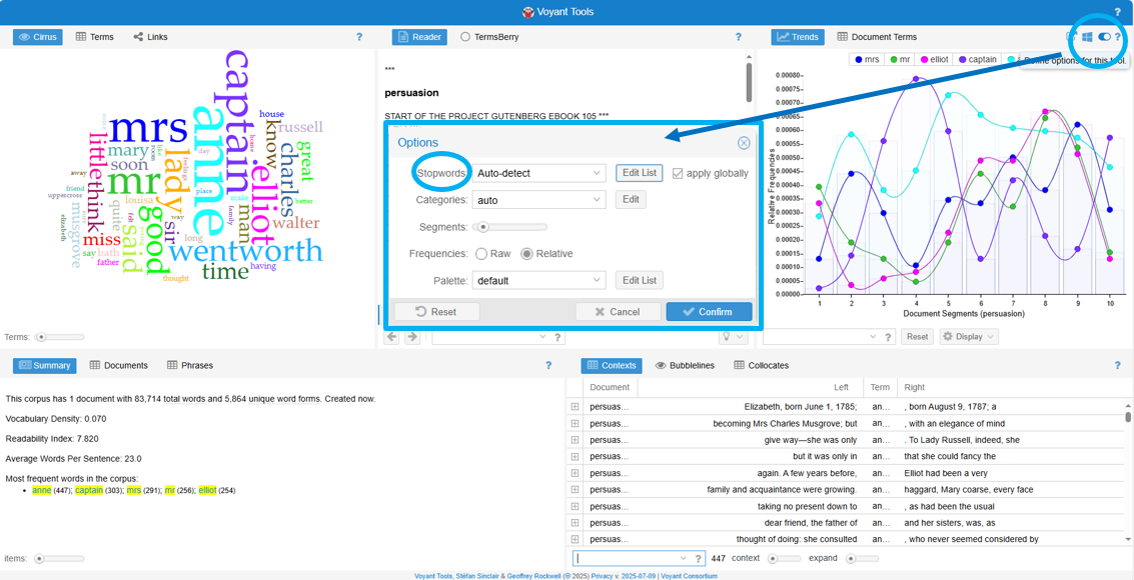To conduct research in text analysis
- Identify the critical gap which your research will answer
- Find your texts
- Clean and prepare your texts
- Analyze your texts
- Visualize your texts
1. Identify the critical gap which your research will answer
Some example research questions that you might be interested in :
【張愛玲往來書信集】- 2巻
- 分析歷經四十年書信往來中的個人關係與情感變化
- 探討書信內容與張愛玲文學創作主題的連結
- 揭示書信中對歷史與文化背景的觀察與反思
Shakespeare Digital Analysis
-
Comprehensive analysis of all 37 plays using multiple tools
-
Character network analysis and thematic pattern identification
-
Language evolution tracking across different periods and genres
Historical Newspaper Topic Modeling
-
Processing of 20,000+ historical articles
-
Identification of emerging themes during significant historical periods
-
Visualization of topic evolution over time
Social Media Sentiment Analysis
-
Large-scale processing of social media content
-
Real-time public opinion tracking
-
Bias pattern identification across different communities
2. Find your texts
| There are many ways to collect your texts (data or corpus): |
|
| Possible sources for collecting texts: |
|
Category |
Resource Name |
Description |
Link |
|
Corpus |
Brown Corpus |
A standard reference corpus for English, useful for linguistic research. |
|
|
British National Corpus (BNC) |
A 100-million-word collection of samples of written and spoken British English. |
||
|
COCA (Corpus of Contemporary American English) |
A large, balanced corpus of American English from 1990 to present. |
||
|
CHILDES |
A corpus for studying child language acquisition. |
||
|
Data |
DATA.GOV.HK |
Various types of datasets across different categories from different providers. |
DATA.GOV.HK |
| Humanitarian Data Exchange |
A platform for sharing humanitarian data to improve decision-making during crises. |
HDX | |
| Kaggle | A platform with datasets across various domains for analysis and machine learning. | Kaggle | |
| UCI Machine Learning Repository |
A collection of datasets for machine learning and statistics. | UCI Repository | |
|
Open Data Portal (data.gov) |
The home of the U.S. government’s open data. |
||
|
World Bank Data |
Access data for global development indicators. |
||
|
Literacy Texts |
Project Gutenberg |
A digital library offering over 60,000 free eBooks, including classic literature. |
|
|
Perseus Digital Library |
A collection of historical texts in Greek, Latin, and other ancient languages. |
||
|
Internet Archive |
A vast collection of books, movies, music, and other digital materials. |
||
|
|
HathiTrust Digital Library |
A large-scale collaborative repository of digitized books and journals, including rare texts. |
|
|
|
Early English Books Online (EEBO) |
A collection of texts from early modern English literature, history, and culture. |
|
|
LibriVox |
Free audiobooks of public domain texts, read by volunteers. |
||
|
Historical Documents |
Europeana |
Access to millions of digitized items from European cultural heritage institutions. |
|
|
|
Chronicling America |
A collection of historic American newspapers from 1789 to 1963. |
|
|
|
World Digital Library |
Historical documents, maps, photos, and more from cultures around the world. |
|
|
|
British History Online |
Primary and secondary sources for the history of Britain and Ireland. |
|
|
|
Avalon Project |
Historical legal documents from ancient times to modern, curated by Yale Law School. |
|
|
|
National Archives (UK) |
Access to British government documents, wills, and military records. |
|
|
Linguistics |
Ethnologue |
A comprehensive reference on world languages. |
|
|
SIL International |
Resources for language development and documentation. |
||
|
Glottolog |
A bibliographic database for lesser-known languages. |
||
|
Linguist List |
A global online forum for linguists that includes job postings, resources, and discussions. |
3. Clean and prepare your texts
Text Pre-processing involves tasks such as:
- Tokenization (splitting text into individual words or tokens)
- Stopword removal (filtering out uninformative words like "a," "an," and "the")
- Lemmatization or stemming (reducing words to their root or base form)
4. Analyze your texts
|
Traditional Tools |
AI-Based Tools |
|
|
Traditional Tools vs. AI-Based Tools
- Traditional tools like MALLET, NLTK, and R require programming skills, often in Python.
- Lack of coding knowledge creates a barrier for humanities scholars.
- AI-powered tools simplify complex analyses with intuitive, plain-language prompts.
- These tools bridge the gap between technical expertise and scholarly research.
5. Visualize your texts
| Traditional tools - VOYANT | |
|
|
|
| AI-based tools - (1) Prompt AI to code - Python | |
|
1. Describe your goal 2. Copy and paste on IDE* (e.g. Google Colab) 3. Prompt example: - Draft Python code to fetch the full text of "Persuasion" by Jane Austen from this site: https://www.gutenberg.org/ - the output should be a .txt file.
* Integrated Development Environment (IDE) - A tool for writing, testing, and running Python code. |
 |
|
4. Run Python code on IDE 5. If error occurs, copy the error message and prompt AI to debug 6. Run the revised code again 7. Download the result e.g. a text file, CSV file 8. Verify the content – ensure it includes Chapter I – Chapter XXIV |
|
| AI-based tools - (2) Conduct preliminary text analysis using AI bots | |
|
1. Upload the .txt file to an AI Bot Some examples: (a) Text-based analysis Perplexity Pro https://www.perplexity.ai/search/perform-text-analysis-on-conco-6bwu5333QWO43iimPuRD9w?0=d#0 Poe Assistant https://poe.com/s/GRL0e7eNjYBpAB7yYLIS Claude-Sonnet-4 |
|
|
(b) Interactive relationship network diagram e.g 【張愛玲往來書信集- 書不盡言】中有關「傾城之戀」部分的人物關係分析
Claude-Sonnet-4 https://poe.com/s/NtgESmfqKEWq7xN0MRsr
|
Click the diagram to explore its interactivity ↓ |
 |
|






